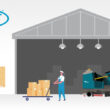Vigilance and sound advice help spell relief from landfill gas
Whether immediate problems, emissions regulations or a desire to plan ahead are the motivation for installing a landfill gas system, clearly defining the system’s goals is a crucial first step to success.
Soccer matches at the Renaissance Park athletic complex in Charlotte, N.C., are often fast-paced and exciting. Action at the golf course across the street is much slower, but still has its adrenaline, charged moments. To call either sport explosive, however, is a stretch, and local officials are trying to keep it that way. It is the park’s location that presents this unique challenge. The soccer fields were built atop a 375-acre landfill that was operated by the city from 1968 to 1986, and the Renaissance Golf Course clubhouse sits about 100 feet from the landfill’s perimeter.
The threat of explosion is a result of the landfill gas (LFG) generated by 18 years worth of decomposing solid waste buried at the site. A hint of the potential dangers came in 1995, when a quick flash of gas burned a woman at the soccer fields. The gas had accumulated in a small depression and ignited after the woman lit a cigarette near the spot.
Settlement of waste was the culprit, according to Tom McDermott of the Mecklenburg County Park and Recreation Department, which leases the complex from Charlotte. Settlement caused the depression to form next to a concrete lighting pad, and LFG migrated along support pilings into the eroded area.
The first step of park managers was to pump a slurry-type material beneath the pad and to improve response time in filling any other eroded areas. “One of the things that we have to watch much more closely is settlement,” McDermott says, “and we have to take care of [settled areas] immediately.”
LFG also showed up last year at the golf clubhouse, which was closed after gas sensors installed in the building detected unsafe levels of methane.
The city had first tested for LFG when the clubhouse was built and found no significant quantities, according to Keith Carpenter, a project manager with Charlotte’s engineering and property management department. Nevertheless, a passive system allowing LFG to vent away from the building was installed as a precaution.
However, the original passive system is proving to be insufficient, according to Carpenter, as tests are currently showing 40 percent to 50 percent concentrations of methane around the foundation of the clubhouse. Therefore, an active system, consisting basically of a vacuum pump to flush out any LFG and draw fresh air through the foundation, will be installed for around $60,000.
Overall, in the past year the city has spent around $400,000 on the first major re-working of the site, Carpenter says. A private consultant recently estimated future maintenance costs at the park will be $55,000 a year and $250,000 every five years or so for major re-grading. These costs include dealing with LFG as well as other issues related to the park’s location.
“The fact that methane gas exists at these facilities should not be a deterrent for others considering building facilities on landfills, but they need to go in with their eyes open”, McDermott says. “The maintenance costs, for example, are going to be higher.”
Other steps taken at Renaissance Park to deal with LFG, both before and after the problems in 1995, include:
* installing around 30 permanent monitoring wells along the landfill’s perimeter, to track potential migration of LFG from the site;
* Closing off areas in which gas could accumulate. Storm drains, for example, have been covered with grates; and
* hiring a consultant to conduct an overall site assessment. At the consultant’s recommendation, the city has instituted a monthly monitoring program that targets possible gas buildup and migration. The program includes site inspections for any eroded areas where gas could accumulate and a written record of the department’s efforts.
“The landfill seems like it’s always changing,” Carpenter says. “Sometimes there is gas, sometimes there isn’t. It can change day to day, year to year.
“The [most important] thing is having everyone that has anything to do with the site daily be aware of any problems that might come up and what they need to report.”
COMMON SYSTEM ELEMENTS
Unlike the passive venting originally installed at the Renaissance clubhouse, many systems actively collect LFG and may incorporate several of the following elements:
* probes to monitor any gas migrating from the landfill site. The most important characteristics of LFG to monitor are temperature, flow rate, composition and pressure;
* vertical gas extraction wells, well-heads and header pipes that collect gas from throughout the landfill; a blower that vacuums LFG through the pipe system toward a central point;
* a tank for storing condensate that forms as LFG cools off while moving through the system;
* an enclosed flare system or utility flare skid to bum off LFG; and/or a gas-to-energy facility.
Assistance from experienced team members with up-to-date knowledge of technology and regulations is vital in choosing an appropriate system. This may involve using city or county engineers, private engineers or both working together.
Long-term planning is also vital, since partially or completely closed sites may generate, LFG for several decades. Going from low-cost to high-cost solutions may be more expensive in the long run if initial steps prove to be ineffective.
Defining goals is key
Whether immediate problems, regulations or a desire to plan ahead are driving landfill operators to deal with LFG, a crucial first step is to determine a system’s goals. Some operators may simply need to limit odors; others may be seeking to control migration or air emissions or to generate gas-to-energy revenues.
At sites where odor control is the primary goal, some sort of passive system allowing gas to vent is probably already in place, according to Mike Michels, a senior environmental engineer in Camp Dresser & McKee’s Milwaukee office. As the system vents gas, the smell provokes complaints from nearby residents or businesses.
A simple and relatively inexpensive option is to install odor-absorbing filters on the vents. “Sometimes filters work, and [operators] save themselves a lot of money,” Michels says.
However, this option can be fairly labor-intensive, since the filters must be replaced once their carbon content is depleted. Connecting vents with an above-ground pipe network and pumping LFG to a centrally located 55-gallon carbon canister may be more effective, according to Michels.
The canister acts like a larger version of the vent filters, absorbing odors through the use of carbon. The barrel is either replaced or regenerated once the carbon is spent.
Pumping LFG to a central flare is a third option for controlling odors. Initially more costly than filters or collection barrels, an active flare system in the long term may be a more cost-effective solution.
Operators dealing with an LFO migration problem have both passive and active options as well. Digging a cut-off trench along the landfill boundary through which LFG is migrating is a common, relatively simple passive solution.
Since LFG seeks the path of least resistance as it moves underground, the idea is to provide a new path. A trench backfilled with stone can intercept LFG and allow it to travel upward and vent onsite, before it threatens any structures located near the landfill.
The cut-off trench should run far enough so that any gas escaping around its ends will not reach such structures. Utility trenches near the cut-off trench are a concern, since LFG can continue its migration along these trenches toward inhabited areas.
Geology and water table location are also important factors when considering a cut-off trench, according to Michels. In an area with sandy soil, for example, the difference between the trench and surrounding soil may not be great enough to ensure that gas will travel upward to vent once it reaches the trench.
In this situation, using bentonite or clay rather than washed stone to backfill the trench or adding a geomembrane barrier may make the trench more effective, since these materials are more likely to force migrating gas upward in sandy soil to vent to the surface.
The depth of groundwater is also crucial to consider, since gas typically travels anywhere between this depth and the ground surface. An effective cut-off trench should therefore be as deep as the groundwater to ensure that all potential migration is controlled. In areas with a deep water lie, construction of a cut-off trench may not be cost-effective.
In many cases, even a trench that works well in capturing and venting LFG may not be satisfactory. “[The trench] has its applications, but it doesn’t work everywhere, all the time,” Michels says.
Such passive venting of LFG may not be enough for some landfill operators because, although the gas is contained within the site, the danger of explosion remains. Sparks generated on the ground could set off such an explosion.
One option is to install pipes extending several feet off the ground in the trench, so that gas is vented away from any possible catalysts. As with odor control, a more complete solution to migration would be an active collection system that flares gas or puts it to use.
Michels estimates there are currently around 126 projects at U.S. landfills and many more overseas actively collecting LFG for some beneficial use.
About 70 percent of the U.S. projects involve burning gas in engines to generate electricity. Converting gas to vehicle fuel or burning it to heat boilers tn nearby facilities are the other most common uses.
Michels expects the number of beneficial-use projects being considered and undertaken to increase over the next several months because of EPA’s recently published regulations, combined with the possible expiration of federal tax credits for such projects. If proposed legislation extending the credits does not pass, operators will need to install the collection components of beneficial-use systems by Dec. 31, 1996, to qualify. “The trend [toward beneficial use] is looking very optimistic, very good right now,” he says. “[The tax credit situation] has really stirred a lot of work in 1996.”
TECHNOLOGY ON THE HORIZON
Battery-like fuel cells now in development may eventually provide another beneficial-use option. These phosphoric acid cells use methane to produce electricity and heat.
The technology was tested successfully at Penrose Landfill, Sun Valley, Calif, in a demonstration project conducted by International Fuel Cells, South Windsor, Conn., and EPA.
In 1993, the company installed a Gas Pretreatment Unit (GPU) at the existing Penrose gas-to-energy facility to study the OPU’s ability to clean contaminants from LFG. After successful testing, a 200-kilowatt cell was connected to the GPU.
Power generated during the project was sold to the Los Angeles Department of Water and Power to help offset costs. In 1995, the fuel cell was disassembled and shipped to a landfill in Groton, Conn., for another one-year demonstration project funded by investor-owned Northeast Utilities, Berlin, Conn.
The experiments have shown fuel cells’ potential advantages to be low emissions, noise and vibration. Also, a 200-kilowatt cell is capable of producing around 760,000 BTU per hour of clean, thermal energy that could be used to heat buildings, according to Ron Spiegel, EPA’s project manager for the fuet cell testing.
Spiegel says operators have shown significant interest in fuel cells, but steep initial costs are a major stumbling block.
“Technically, we’ve demonstrated that we can do it,” he says. “Economically, there are a little more shades of gray there.”
Fuel cell costs are currently around $3,000 per kilowatt, according to Spiegel, so a 200-kilowatt cell like the one tested at Penrose would run around $600,000. At that level, for fuel cells to be as cost-effective as flares, Spiegel estimates the electricity generated would need to sell for around 7 cents per kWh.
This number would drop to about 4 cents per kWh if advances bring cell costs down to $1,500 per kilowatt in the next few years, according to Spiegel. At that point, the economics of fuel cells may be more appealing to landfill operators.
After years of effort, Bristol, Va., received a permit in February to convert an abandoned quarry into a regional landfill. This new facility is expected to be a revenue-generating, profitable venture and will be able to service a five- or six-country region.
Bristol began pursuing the quarry landfill in 1988 after a large, private waste services firm attempted to site the same project and failed.
Like many other area communities, Bristol had decreasing landfill space. The city’s smaller size and rural location meant that there was enough garbage to draw interest from private industry and that the city would end up paying higher disposal rates to transport trash to a far-away site. Bristol also faced prohibitive costs in having to build and operate a landfill to serve only one community.
With the hope of creating large, regional facility that could serve a wider geographic region and generate revenue, the city decided to pursue the quarry project itself. STS Consultants, Deerfield, Ill., was retained to obtain a permit and create a design for the technically challenging site.
Seven years later, Bristol is now preparing bid documents for construction of the landfill.
The quarry site’s potential capacity is estimated to be 7.7 million cubic yards, allowing disposal of 400 tpd of waste for 40 years. Operations are expected to begin in the second quarter of 1997.
The Emissions Guidelines and New Source Performance Standards published by EPA this March have operators scrambling to learn if their sites are affected. The new rules have two basic conditions.
* Landfills must have accepted waste after Nov. 8, 1987, and have a design capacity greater than 2.5 Mg;
* In addition, landfills must emit more than 50 Mg-per-year of non methane organic compounds.
Sites meeting both conditions have only a few months to install active collection systems to be in compliance with EPA’s regulations.
The Solid Waste Association of North America is conducting educational seminars on the regulations in Washington, D.C., Los Angeles and Chicago, and can be reached at (301) 585-2898



















